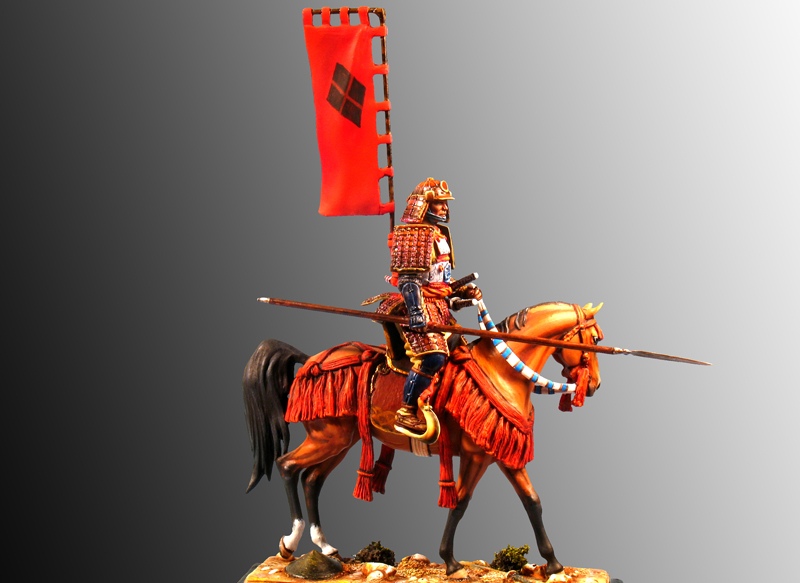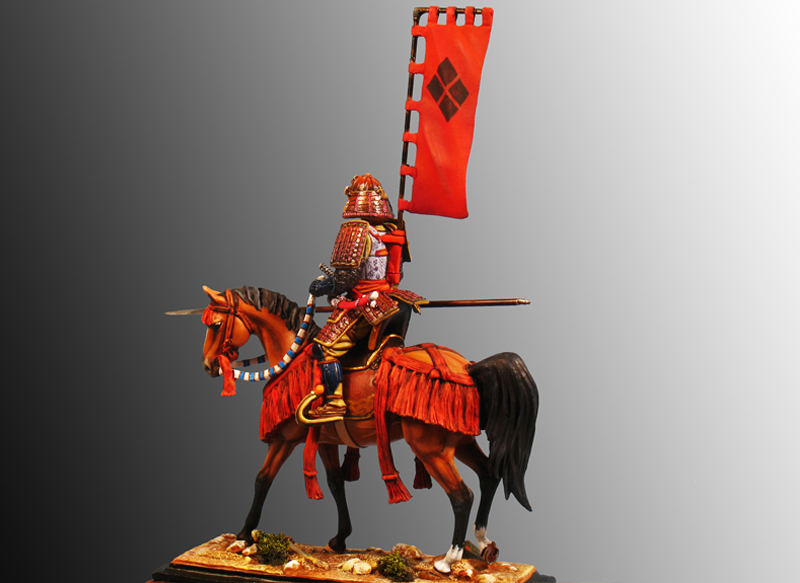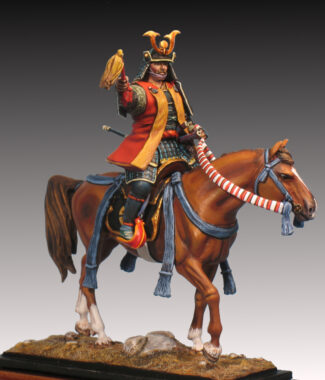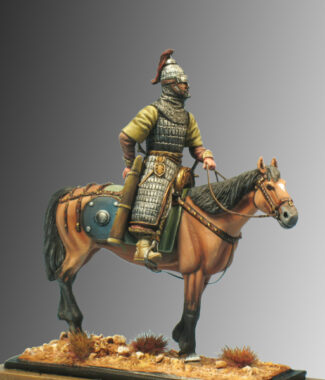The drawn-out feudal struggles among the great lords, which began in the twelfth century, loosened the bonds of imperial authority, but also made the samurai influential, turning them into a privileged military caste. Most were tired to the feudal lords, who did not given them lands holdings but paid them in kind. The most privileged of the samurai were the bannermen (hatamoto), vassals of the shogun, militarily the strongest feudal lord in Japan, who was the country’s true ruler, the emperor was no more than a figurehead. The task of the hatamoto was to go to war for the shogun and, in times of peace, to oversee his holdings and collect taxes.
Until the thirteenth or fourteenth century, archery combat was the principal form of horseback fighting; swordplay was marginal. When fighting on horseback, the samurai used a long, single-handed sword (tachi). As sword combat became more important, fighting of foot increased, and the samurai used a shorter, two-handed sword (katana).
During the civil war, large armies were raised which fought rationally and purposefully; there was less and less space for the traditional forms of combat. One on the most powerful warlord, Takeda Shingen (1521-1573) organized an effective cavalry force which charged the enemy with spears and swords, and was also successful in hand-to-hand combat.
Shingen died on May 13, 1573, at age 53 from illness. His son Takeda Katsuyori (1546–1582) effectively succeeded Shingen though the nominal head of the family was his grandson Takeda Nobukatsu; Katsuyori continued Shingen’s aggressive expansion plan south and westward and was initially successful, briefly achieving the largest extent of Takeda rule. However, he was defeated in the Battle of Nagashino in 1575 by Oda Nobunaga and Tokugawa Ieyasu.
After Nagashino, the Takeda clan fell into sharp decline as it had lost many of its most notable samurai during the battle. The clan was effectively eliminated, although descendants of the Takeda clan would take prominent positions in the Tokugawa shogunate, established in 1603.
The figure shows the evolution that the samurai armor had undergone over time. The warrior carries the daisho (pair of bladed weapons, one short and one long; one short tantō through the obi (cloth sash) and one tachi (sword somewhat longer and curved than the katana) hanging from it. He carries the yari –spear- that had definitely replaced the long bow in the horse troops. The flag with the shield of the clan is also observed, and its way of carrying it attached to the back. The high saddle, characteristic of Japan, made the rider ride higher than western warriors.
NOTE
We would like to give special thanks to Aris Stamou, friend and excellent miniaturist, who thanks to his profound knowledge on this subject, has been of great help to us in clarifying those details related to the correct reproduction of the armour, shape and anchorage of the rear support of the flag, clarifications on the saddle and strap of the horse, as well as other data that have been useful to us and with which we have been able to produce this figure.








Reviews
There are no reviews yet.